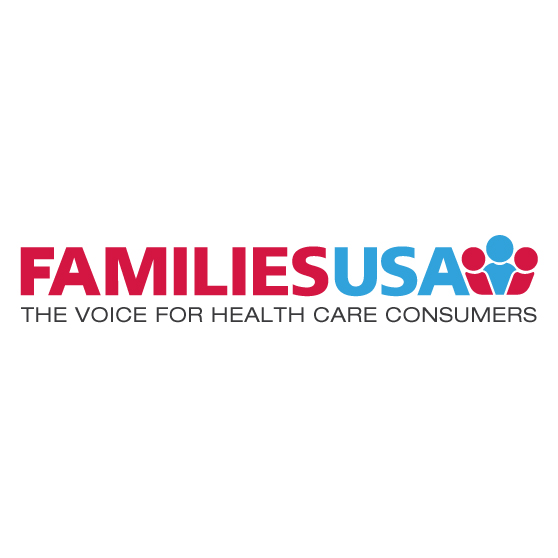
Proposed Health Insurance Premium Increases: A Call to Action for Advocates
08.26.2024
On August 1, the Centers for Medicare & Medicaid Services (CMS) posted proposed increases in health insurance rates for 2025 on Healthcare.gov. These proposed increases often go unnoticed this time of year, but they will have a profound impact on consumers’ health and wallets, and advocates must urge immediate action on policies that will lower costs. Policymakers and advocates have important roles to play in ensuring that people who purchase health insurance have access to affordable care.
- Congress should extend affordability assistance, including the enhanced premium tax credits in place today through the Affordable Care Act and the Inflation Reduction Act that help millions of people afford marketplace plans.
- Insurance commissioners and federal regulators should reject unjustified or unreasonable premium increases. Consumer groups can help address access and affordability issues by being involved in the state rate review processes through testimony and highlighting examples of rate increases’ impact on local residents.
- Federal and state policymakers should confront high prescription drug and hospital prices–among the root causes of premium increases impacting both individual marketplace and employer-sponsored plans.
Using resources such as the ones listed in this fact sheet and the information in our analysis below can help advocates guide discussions with policymakers about high health care costs.
Call to Action: Congress must act now to extend the affordability assistance for millions of families
Enhanced premium tax credits in healthcare.gov and state marketplaces are slated to expire at the end of 2025. Congress boosted their capacity to support families during the COVID-19 pandemic and again as part of the Inflation Reduction Act by capping the amount of money that people pay out of their pockets for typical health insurance plans at 8.5% of income — and lower for people with low and middle incomes.
Consumers’ health and financial security hangs in the balance if the affordability assistance expires, or even if Congress waits too long to act. Insurance companies will set rates for the 2026 plan year in the summer of next year, so Congress can’t afford to wait until the end of 2025 to act or people will see massive premium spikes in their health insurance.
The Urban Institute estimates that by 2026, many people would see their annual premiums increase by 50% or more. Caps on enrollees’ share of premiums would be eliminated, and a couple in their early 60s may see their premiums increase by as much as $17,500 per year if the tax credits expire.
Regulators should throw out unjustified, unreasonable premium increases
This year, among marketplace insurers, the average increase is 7% but proposed changes range from a decrease of -14% to an increase of a whopping 51%. Consumers can find public information about each proposed rate here and it also directs consumers to the state or federal agency where they can file comments.
Federal law requires that rate increases of 15% or more be reviewed. Increases exceed 15% for one or more carriers in 15 states (Alaska, California, Georgia, Michigan, Nevada, New Jersey, New York, North Dakota, Ohio, Pennsylvania, Utah, Virginia, Vermont, Washington, Wisconsin). Advocates in many of these states are working to make sure these major increases are justified or thrown out so that no consumer is stuck with a big increase to their health insurance bills.
Several states have their own process to review proposed premium increases, which include opportunities for the public to weigh in. The “rate review” process examines increases of any size and rejects or modifies the most unreasonable increases. State regulators also incorporate cost growth targets to keep providers from setting prices too high and to make sure that people and families with low or moderate incomes do not have to spend too much of their earnings on their health care coverage. Advocates should weigh in on this year’s proposed rates if their states have such a process. If not, they can still urge their insurance departments and state legislators to improve the rate review process.
There’s evidence from previous years showing that public rate review processes make a difference. In some states, regulators slashed proposed rate increases when they determined insurers’ cost assumptions were inaccurate or that unaffordable rate increases would backfire for both consumers and for the health insurance market.
Call to Action: Tackle the root causes driving premium increases
There are many factors that impact what we pay in premiums, as well as what our employers pay, which in turn affects our take-home pay. Some of the issues driving premium increases this year are:
- Increasing drug costs: Besides general price increases in drugs, expensive new diabetes and weight loss drugs and gene therapies affect premiums. Drug companies set the list price for their drugs long before they are purchased by the consumer. These underlying prices are paid by insurance providers who in turn pass those high and rising costs along to families and employers in the form of higher insurance premiums. To further rein in these prescription drug costs and rising insurance premiums, advocates should press policymakers to protect all consumers from high and irrational drug costs and address the abusive behavior of large pharmaceutical manufacturers. Thanks to the Inflation Reduction Act, some drugs prices are finally subject to price negotiation for people with Medicare. Policymakers should work to extend these negotiated prices to people with employer-based or individual coverage too. They should also end the abusive practices of drug manufacturers that keep competitors and generic drugs off the market.
- Increased hospital consolidation and hospital prices: Since these insurance rate projections really vary among states and among carriers, they are ripe for scrutiny. People may question whether the assumptions are accurate and whether their state could boost efforts to constrain some of the root causes of high and variable rates. Insurers in a number of states note growing that hospital consolidation, and the increased hospital prices that result, are a major driver of their rates. This consolidation has taken place without meaningful regulatory oversight or effective intervention and has led to massive price increases while health care quality remains the same or even worsens in many instances. In the last 10 years, hospital prices have increased as much as 31% nationally, now accounting for nearly one-third of U.S. health care spending and growing four times faster than workers’ paychecks. Advocates should urge policymakers to advance solutions to address the underlying drivers of high and rising health care costs and hospital consolidation. For example, policymakers should work to pass reforms that prohibit anti-competitive behavior among hospitals and big health care corporations and require greater price transparency.
The August rate posting is another key opportunity for advocates of comprehensive, affordable care to talk to policymakers about the many ways they can take action to help bring down costs for families everywhere. Ask Congress to extend enhanced premium tax credits, protecting millions of families’ access to affordable care. Request that regulators reject unreasonable health insurance premium increases. And urge state and federal policymakers to work to combat the high prices of prescription drugs and hospital care, which are among the root causes of premium increases.


